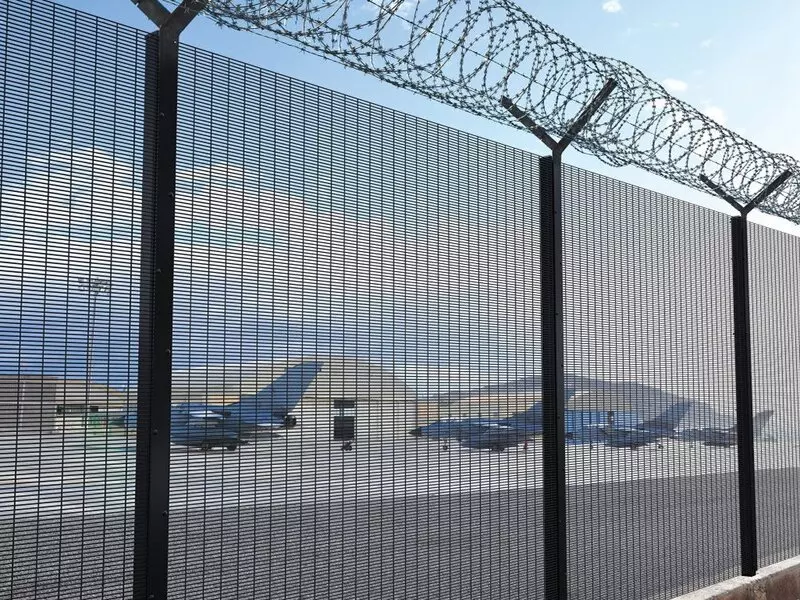High Security Fences: Design and Material Guide for Maximum Security
High security fences are structures specially designed to provide security and protection. These fences are used to increase the security of institutional, commercial and industrial areas. High security fences may include physical barriers, moving parts, electronic security systems and other security features. They are designed to prevent unwanted entry, protect assets and secure surrounding areas.
High security fences can be taller, sturdier and more complex than traditional fences. They are constructed using a variety of materials, designs and technologies and can be customized to specific security needs.
Benefits of high security fences
- Security and Protection: High security fences protect property, assets and people by blocking unwanted entry and preventing unauthorized access.
- Deterrence: Their strong and conspicuous appearance helps keep potential attackers or thieves away.
- Privacy: High security fences ensure privacy by making sensitive or confidential areas invisible.
- Flexibility: Many high security fences can be customized and enhanced to suit specific needs.
- Durability: Constructed using high-quality materials, high security fences are long-lasting and resistant to harsh conditions.
Material selection for high security fences
Material selection for high security fences is critical to the performance, durability and visual aesthetics of the fence. The following materials are commonly used for high security fences:
- Steel: Steel is the most commonly used material for high security fences. Steel is strong, durable and resistant to corrosion.
- Stainless Steel: Stainless steel provides better resistance to corrosion and is easier to clean.
- Aluminum: Aluminum is a lightweight and corrosion-resistant material. Additionally, it may look aesthetically appealing.
- Galvanized Steel: Galvanized steel is longer lasting thanks to the zinc coating applied on the steel.
- Concrete: Concrete is a strong and durable base material for high security fences.
Each material has its own advantages and disadvantages. The most appropriate material should be selected according to the needs of the project, budget and visual preferences.
High security fence design
High security fence design should also consider aesthetics and appearance while meeting security needs. The following design elements should be considered:
- Height: High security fences are generally built at heights ranging from 2.4 to 4.5 metres.
- Fence Material: Strong and durable materials such as steel, stainless steel, aluminum or galvanized steel are preferred.
- Fence Panels: Fence panels can be rectangular, triangular, or pyramidal in shape and may contain sharp tips, spines, or other deterrent features.
- Moving Parts: High security fences may contain moving parts (e.g., barbed wire, electrified wire).
- Electronic Security Systems: Electronic security systems such as sensors, cameras, alarms and lighting can be integrated.
- Visual Design: The appearance of the fence can be designed to harmonize with the surroundings and align with the corporate identity.
The design should be aesthetically and visually striking while meeting security needs.
High security fence installation
Proper installation of high security fences is crucial to their effectiveness and durability. The installation process includes the following steps:
- Site Evaluation: The characteristics of the area, slope, soil structure and other factors are carefully examined.
- Foundation Preparation: A solid concrete foundation is created for the fence posts.
- Post Placement: Fence posts are placed at appropriate intervals and depth.
- Installation of Fence Panels: Fence panels are securely fixed to the posts.
- Attaching Moving Parts: Barbed wire, electrified wire or other moving parts are added if necessary.
- Integration of Electronic Systems: Electronic security systems such as sensors, cameras and alarms are installed.
Final Checks and Tests: Final checks and tests are performed to ensure that all components are working correctly.
Installation must be carried out by an experienced team and comply with all local regulations and standards.
High security fence maintenance and repair
Regular maintenance and repair are required for high security fences to be long-lasting and effective. The following steps are important for maintaining and repairing fences:
- Periodic Checks: The structural integrity of the fences, the operation of moving parts and the functionality of electronic systems are checked regularly.
- Cleaning and Surface Care: Fences are cleaned of debris, dirt and rust and repainted when necessary.
- Repairs: Damaged or worn parts are identified and repaired or replaced quickly.
- Upgrades: Fences can be improved and upgraded in line with new security technologies or standards






